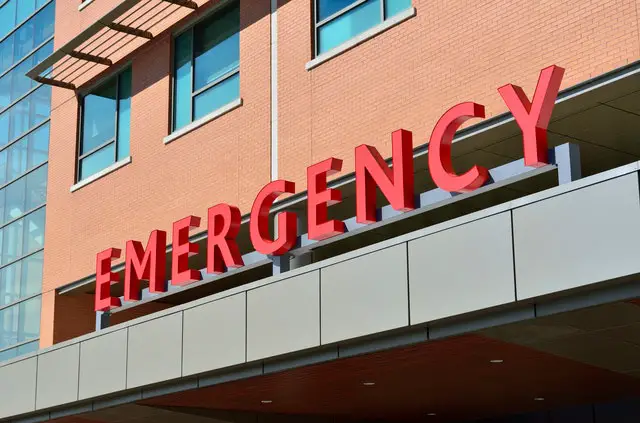Stroke Awareness Month – What You Need to Know to Prevent One

May is National Stroke Awareness Month. Most people know that a stroke is a deadly or disabling illness. Stroke Awareness Month focuses on increasing people’s understanding of stroke and how to prevent it. For those who don’t know, I have been a neurology nurse since 2014. So I have seen firsthand what a difference how devastating a stroke can be. I have also witnessed the amazing recoveries of those who recognized the signs and sought help immediately. So in this post, let’s review how strokes occur, what we can do to prevent them, and what to expect if you or a loved one experiences one.
Definition of Stroke
A stroke is also known as a cerebrovascular accident or CVA. If you break the word cerebrovascular apart, then you get Cerebro- for brain and -vascular refers to blood vessels. So a stroke is an accident that interrupts blood flow in a vessel that feeds a part of the brain. As a result, that part of the brain is deprived of oxygen. The symptoms one might experience differ because each part of the brain has its own job. So if the stroke interrupts the part of the brain responsible for vision, then the person experiences a sudden change in their vision. The majority of strokes are caused by an embolus, or a clot, that blocks blood from getting to the brain. At times, a stroke can be caused by damage to a blood vessel causing a bleed. This can be devastating because not only are there parts of the brain not getting their blood supply, the blood is spilling into the enclosed space of the skull. This leads to an increase in pressure with no good place for the brain to go.
Stroke Risk Factors
There are things in our lives that may increase our risk for stroke. Some of these things can be fixed or modified. They are called modifiable risk factors. Other factors can’t be altered. They are referred to as non-modifiable risk factors. Let’s explore them. These can be found in further detail on the American Heart Association’s page on stroke risk factors.
Modifiable Risk Factors
- High blood pressure: go to your primary care doctor regularly. Eat well and exercise in order to keep healthy. If you need medication to manage your blood pressure, take it. According to the American Heart Association, high blood pressure is the leading cause of stroke. So keep it down!
- Smoking: increases plaque buildup that can break off and cut off blood flow to other parts of the body.
- Uncontrolled diabetes: being a diabetic is a risk factor on its own. However, if you establish a routine that keeps your blood sugar under control, you will be better off for it.
- Diet: a bad diet can be harmful to your heart health, which in turn increases your stroke risk. So mind your cholesterol and your salt intake. Aim for balanced meals with fruits and veggies.
- Lack of exercise: sitting all the time can be as dangerous as smoking. So get moving! You don’t have to make a scene about it. Take a walk around the block. Go up and down the stairs a few times with the intention of bringing your heart rate up a little. Dance. Chase your pet or your kids around for a little bit. Ideally, you want to aim for 30 min of increased activity at least five times a week. You can do it!
- Obesity: being overweight increase your risk of diseases like high blood pressure or diabetes
- High cholesterol: increases buildup in your blood vessels that can obstruct or block blood flow
- Atrial fibrillation: an arrhythmia or abnormal heart rhythm that can lead to throwing clots
- Birth control: the pill has been known to increase a woman’s risk for blood clots
- COVID-19: the coronavirus has been found to increase one’s risk for clots
- Sleep apnea: you stop breathing in your sleep which can deprive your brain of oxygen
READ MORE: How to be successful in getting the COVID-19 Vaccine
So basically anything that increases your risk for heart disease or clots increases your risk for stroke.
READ MORE: Numbers You Need to Know – Health Edition
Non-Modifiable Risk Factors
- Age: risk increases as you get older
- Race: risk increases in people of color
- Family History: risk increases if you have close family members that have had one
- Gender: women have higher risk of strokes. Go figure!
- History of stroke, TIA (transient ischemic attack), or heart attack: having a stroke makes you likely to have another.
How Do You Prevent Strokes?
Nothing is guaranteed. You can’t eliminate your risk 100% but try to manage what you can. For me, my risks are my weight, birth control, gender, and race. So I exercise five times a week, eat healthy (most of the time), and see my doctor for routine checkups so I can stay on top of any changes that might increase my risk.
READ MORE: Weight Loss Journey – Even During Quarantine
READ MORE: Why should we have and see a primary care doctor?
Stay on top of your blood pressure, cholesterol, and blood sugar. Exercise. Aim for a heart-healthy diet. See a nutritionist if you think it would help. If you’re a smoker, try to quit. Do all you can to control your risk factors.
READ MORE: Numbers You Need to Know – Health Edition
Stroke Warning Signs
If you forget everything you learned in this post, THIS is what I want you to remember. The acronym to best remember the signs that you may be having a stroke is BEFAST.
B: Balance – a sudden change in balance or unexplained dizziness
E: Eyes Blurry – a sudden change in vision
F: Facial weakness – crooked smile or drooling
A: Arm weakness – one arm is numb, you’re unable to lift it, or you can’t grab something you normally can
S: Speech slurred – words are garbled or you can’t make sense of what people are saying
T: Time to call 911!
If you see any one or combination of those signs, it is important to call 911. The first responders are trained to assess whether or not you’re having a stroke and can warn the hospital ahead of your arrival. This gives the hospital time to prepare to act quickly when you arrive. After all, time is brain! Also, some ambulances are equipped to start providing treatment to reverse your stroke. You miss out on one or both of these benefits when you get a ride to the hospital.
Stroke Treatment
When you get to most hospitals with a stroke, there is a rush to provide treatment to save as much of your brain as possible. A doctor first has to assess you and try to determine the timeline around your stroke. Treatment is dictated by your last known normal or last known well. The most time-sensitive treatments are also your best chance at recovering most of, if not all, of your physical and mental abilities. The purpose of this section is just so you know what options are out there. Whether or not you can benefit from them depends on many factors, which your doctor will discuss with you.
Thrombolytics
Thrombo- (clot) -lytic (decompensate or destroy). Thrombolytics destroy blood clots. This is the first line of treatment in a suspected stroke. Most hospitals use tPA but others might use others. They all work the same. It is essentially a large dose of blood thinner so receiving it puts you at risk for bleeding.
Not only is it important to reverse the stroke as soon as possible but if you’re not having a stroke and you receive it, it doesn’t do much harm. So it is safe. Not everyone is a candidate though. tPA can be used up to 4 1/2 hours from last known well. Ideally, you want it given within three hours. If you’re out of the window, you can’t have it. Other reasons you can’t have it: bleeding, recent surgery, you’re on blood thinners at home, etc.
Mechanical Thrombectomy
A specialized doctor can actually thread a wire from a vessel in your groin or wrist, up to the clot in the blood vessel in your brain, and remove it. This is called a thrombectomy. Not everyone is eligible for this procedure. The criteria are changing as science advances but there are a few key points.
- The clot must be in a large vessel. The doctor has to be able to get to it safely. If the clot is in a smaller or deeper vessel, the doctor can’t use the device without doing more harm than good.
- This procedure can be used with thrombolytics but has a longer window. A thrombectomy can be done up to 24 hours after your last known well. Definitely increases your odds of treatment if you wake up from sleep with stroke symptoms.
- One of the most important factors is that there has to be brain to save. The only way one can determine this is by looking at the imaging of your brain. The procedure can put you at risk for bleeding so it is important for the benefits to outweigh the risks. If the part of the brain affected by the clot has already died, then removing the clot will make no difference.
Mechanical thrombectomy is a great advancement in science but it is not without its risks. The doctor will discuss why they feel a stroke patient is eligible, or not, for this procedure.
Surgery
If a stroke is caused by a bleed, we cannot use thrombolytics or thrombectomy. Thrombolytics will worsen the bleed and a thrombectomy cannot be used. However, a neurosurgeon can place a device in your brain to help relieve the pressure. If that’s not enough, they’ll discuss taking off a section of the skull to give the brain room. FYI: The section of the skull does get replaced eventually. Again, a discussion will be had between the doctors and patient/family as to how they want to proceed.
Conservative management
If a stroke patient does not qualify for any of the treatments just discussed, then conservative management is the last option. If it was caused by a clot, they will start medication that will decrease the chance another clot occurs. If it was caused by a bleed, they will provide medication that can help keep the pressure in the brain down.
Stroke Recovery

Photo by Marcelo Chagas from Pexels
Recovery depends on many factors. The size of the stroke, the location of the stroke, treatment received, and your motivation to get better, just to name a few. Rehabilitation (physical therapy, occupational therapy, speech therapy) will be started as soon as it is safe. Some will leave the hospital as if they never had a stroke. Others will need more time and therapy. There are support groups patients and families can join. No one will understand what you are going through better than people who have gone through it. It can also be a great source of information. There may be programs or events that you are not aware of in your community that can be helpful.
When you leave the hospital, you should follow up with your primary care doctor, a neurologist, and quite possibly a cardiologist. Who you need to see depends on what caused your stroke and your risk factors for having another one.
Stroke Prevention Drugs
If eligible, you might be put on medication like aspirin and/or Plavix. A statin is also likely to be ordered. This helps to lower your cholesterol. Even if your cholesterol is at a normal level, adding this medication can lower your future stroke risk. Patients who are likely to clot may be put on a blood thinner.
If you see a primary care doctor regularly, they may start you on some of these medications BEFORE you ever have a stroke.
READ MORE: Why should we have and see a primary care doctor?
Stroke is the 5th leading cause of death and the leading cause of disability. But there is hope! Did you know stroke used to be the 3rd leading cause of death? Then the 4th. And now the 5th. This means that education is working. People are coming to the hospital sooner and technology is advancing so treatment can begin faster.
Your turn. Have you ever had a stroke or known someone who’s had one? What resources have helped you or your loved one? Share in the comments below.


How to Get Motivated to Work Out When You Hate It! —
[…] READ MORE: Stroke Awareness Month – What You Need to Know to Prevent One […]
Numbers You Need to Know - Health Edition —
[…] Stroke Awareness Month – What You Need to Know to Prevent One — […]